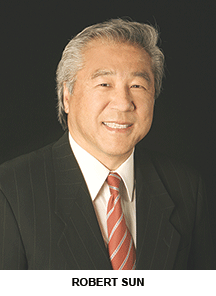 The 1920s was a high point of the Progressive Education movement whose most famous proponent was American educationist John Dewey (1859-1952). A response to school education delivered according to social class in 19th century industrial society, progressive education broke the mould and introduced a more enlightened approach to public schooling — to transform schools into effective agencies of democratic societies.
The 1920s was a high point of the Progressive Education movement whose most famous proponent was American educationist John Dewey (1859-1952). A response to school education delivered according to social class in 19th century industrial society, progressive education broke the mould and introduced a more enlightened approach to public schooling — to transform schools into effective agencies of democratic societies.
While progressive education had several facets, it essentially followed three teaching strategies. First, it developed an emergent curriculum which responded to children’s enthusiasms, acknowledging that students are most motivated to learn things in which they are already interested. Second, it introduced integrated curriculums enabling children to learn thematically, rather than study compartmentalised subjects. A third innovation of the movement was experiential education (aka learning by doing) which requires students to move out of their chairs, work with their hands, and actively cooperate with peers to achieve shared goals.
Despite its promise and a number of early successes, progressive education eventually lost momentum in the United States. Much of the decline was due to the cultural conservatism of the 1940-50 era, a time when national identity was highly valued and standardisation of education was emphasised. In that era, the good citizen was one who fitted into “the system”. The ensuing Cold War caused political and education leaders to value outcomes rather than process — a philosophy which substantially persists to this day.
However, as America comes to grips with the 21st century, the precepts of progressive education are once again becoming popular. Mainly because the human skills needed in this century are vastly different from those of the past. A recent World Economic Forum research study New Vision for Education: Unlocking the Potential of Technology identifies critical thinking, creativity, communication, curiosity, initiative, persistence and adaptability as vital life skills students will need to succeed in the 21st century. These skills, states the 2015 report, will be as important as language, arts, mathematics and science.
The revived progressive education movement also mirrors the priorities of contemporary American society — the need to accept diversity in terms of skills, preferences, responsibilities and individuals’ rights. It values socially engaged thinkers who can analyse complex issues and offer independent conclusions that benefit their societies and the common good.
As much as this modern version of progressive education owes its existence to innovators of the early 20th century, it has been re-shaped by 21st century instructional thinking. Therefore:
• Emergent curricula are built around passion-based learning, in which knowledge and skills acquisition are developed to match with students’ interests.
• Integrated curricula are now known as theme-based learning, using topics that not only activate interest in a diverse array of subjects, but also allow students to grasp how each subject plays its part in solving larger challenges.
• Experiential education has been transformed by technology to provide hands-on, interactive knowledge.
Tiny Finland (pop. 5.4 million) is an acknowledged leader of the neo-progressive movement. Music, physical education and art accomplishment are not only required, but prized, as is time for self-directed activities through the school day. Finland and the US are ranked among the Top 10 countries in the 2015 Global Innovation Index, co-published by Cornell University, INSEAD, and WIPO, an agency of the United Nations. However, while Finland ranks 12th in the PISA (Programme for International Student Assessment — a maths, science and reading test for 15-year-olds) — the US is ranked #36 indicating that progressive education can develop both the foundational academic and ‘soft’ life skills needed for success in this century.
Simultaneously, technology is playing a major role in the re-examination of progressive education. Game-based learning programmes are becoming highly valued in elementary and intermediate education because they’re child-centred and playful, allowing children to explore complex subjects at will. Used in conjunction with interactive white boards and touchscreens, students work together to propose solutions, explain ideas, and engage in close cooperation to acquire knowledge and develop competence.
A cursory examination of contemporary American education indicates that people are revolting against high-stakes testing. In New York state alone, 20 percent of public school students — more than 200,000 in all — have opted out of such tests. In Pennsylvania, the opt-out movement has grown by over 300 percent.
It’s important that educators look at the bigger picture and find fresh ways to motivate children to master skills under their own steam. As a pedagogical philosophy for improving schools, progressive education has been debated for more than a century. Hopefully, this is the year we will finally embrace it to infuse a sense of joy and freedom to choose in classroom learning around the world.
(Robert Sun is the US-based CEO of Suntex International and inventor of First In Math, an online program designed for deep practice in mathematics)